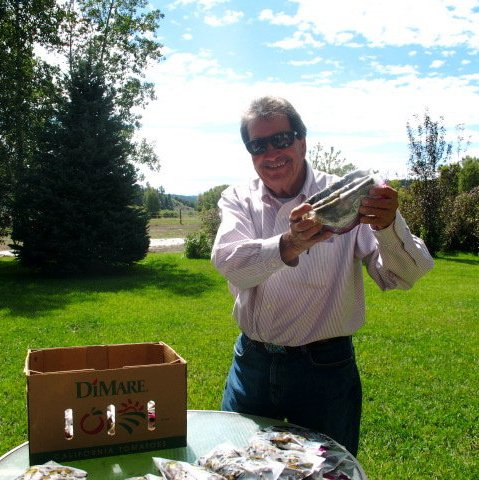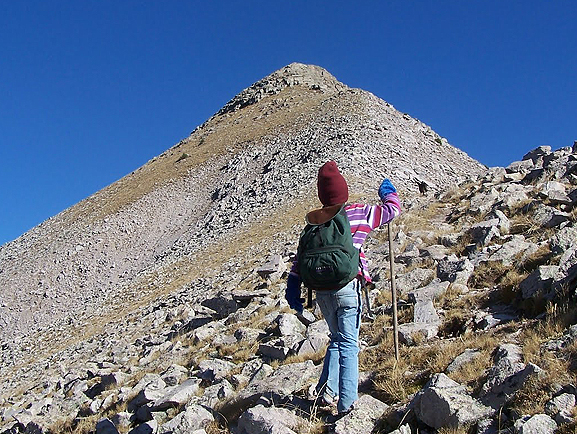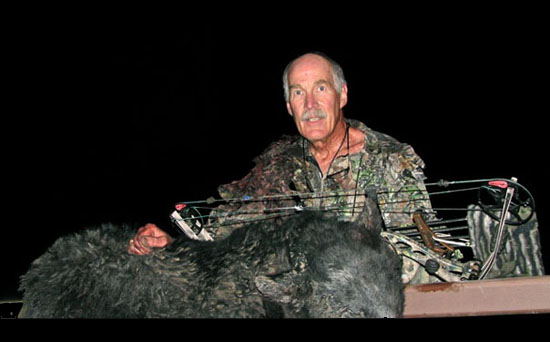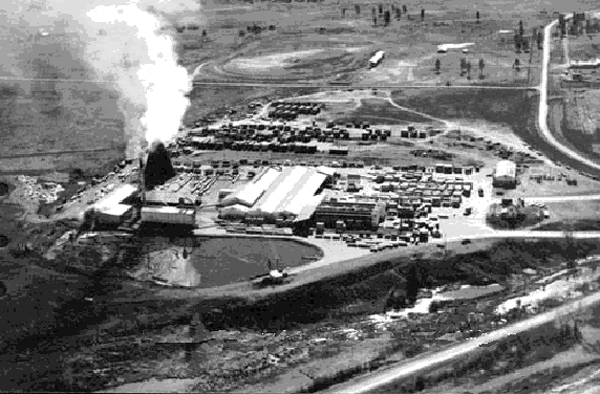
This “Pagosa Before Whiteman” Adobe Photoshop image was created to give an impression of the hot spring and town long before whiteman came to the area. We know little about this epic time around the spring. This image is based on the knowledge available from early reports of Europeans traveling the area. Tribes from the southwest summered around the spring, hunted the area and processed their game. Nomadic people came with teepees while the Puebloans would have built stone structures. There were many small vents and tribes erected teepees and buildings over them making “sweat lodges.” Scenes similar to this existed for thousands of years, far longer than whiteman’s century of occupation.
The Bottomless Pit
This article deals with the history of mankind at the spring and not with the longer term geology except to note that the bottom of the spring has never been found. The late Worth Crouse, Pagosa story teller, historian, writer, and engineer, once told me of his efforts at finding the bottom. He made a steel tripod big enough that it spanned the spring vent. There was a pulley wheel hanging from the peak and he bought “A LOT” of rope. A steel pipe was used as a weight. He didn’t say how much rope he let out except, “A LOT.” I don’t know if that information is recorded but he firmly stated that he never got to the bottom. He found that the pit was not straight down but followed a serpentine path. He had to jiggle the rope and pipe several times to get it to fall farther and became afraid the pipe might become stuck. He pulled it out and never tried again. Recently the depth was measured at 1002 feet but, that is not the true depth as 1002 feet was the length of the tape measure and it must be deeper in order for the water to heat to 144 degrees.
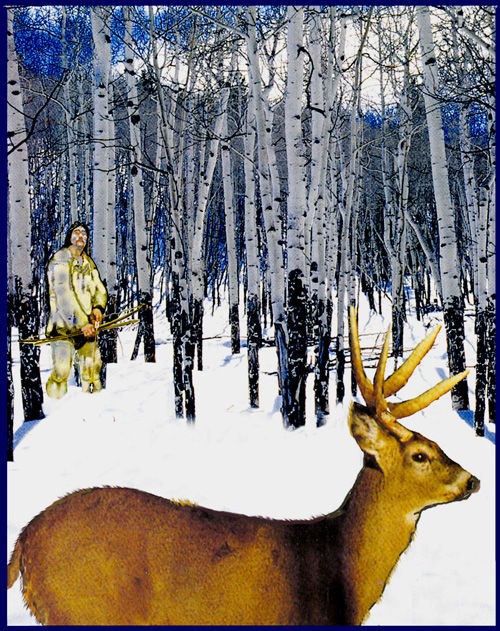 Who was first?
Who was first?
We have no knowledge of the first person to discover the spring. It may have been 10,000 years ago, give or take a few thousand years. There is evidence man populated the Pagosa area, part time, that long ago. We know very little about these people except for their stone tools. They quarried stone creating identifiable chips and their butchering sites also were littered with chips from constantly keeping tools sharp. They were first found and identified at Fulsom, New Mexico in the far northeastern part of the state. They were nomadic, traveling what archaeologist call a “seasonal round,” moving to the mountains in summer and down to lower and warmer elevations in winter. A local “amateur expert” in archaeology claims to have found a “Dalton Point” with an estimated age of 9,000 years linked to a stone circle, within three miles of Pagosa Springs. Don’t ask!
We know considerably more about the Anasazi. They were the first people to adopt farming technology flowing up from Mexico. As farming is intensive year-round work, they had to settle down, building permanent homes and leaving behind the seasonal round and creating new a wealth of artifacts.
The Anasazi, they were here!
Mr. Crouse once told me a story of a group of men hand digging a water well somewhere in town. The story took a half hour as Worth was very detailed, this is the short version. They reached bedrock and then drilled many small angled shafts in the stone. They packed the shafts with dynamite. When the charge was set off it broke through the bedrock. It evidently also pressurized the hot spring aquifer: Worth reported the spring “turned dark and coughed up Anasazi pottery shards for quite a while.” They were here!
It is interesting to note that the Anasazi were known to break a person’s pottery and bury it with them. It may be that when one soaks in the mineral water there could be, in some infinitesimal amount, Anasazi pottery dissolved in the water.
The Anasazi and many other Indian people had interesting creation stories. A common theme is that life, physical and spiritual, began and developed on several layers of space and existence under the ground. These ever smaller, layers within layers, were populated by mystical people, higher beings and Gods. At some point the main God, probably a female spirit as they were a matrafocal – woman centered society, ordered a group to find a path up to the top surface. It is an epic story of adventure and gaining wisdom. They finally climbed four giant trees and sprouted onto the earth’s surface through holes in the ground.
The Anasazi built chambers within their pueblo structures called kivas. Excavated in the ground they had roofs of timber and earth and ranged from two person size up to huge ones that held a hundred or more. In every kiva a small hole was dug to symbolize the hole the people and spirit life came up through. The kiva had a single larger hole in the roof and many ceremonies started in the chamber and moved up a latter to the roof’s earthen surface. Emergence from the earth is a consistent theme with southwest Indians.
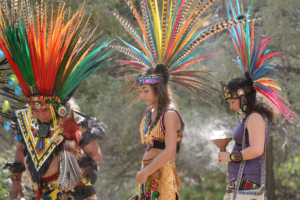 Holy Ground
Holy Ground
One can only imagine what the Anasazi thought as they first walked up to the Great Pagosa, steaming and boiling from the ground. If not for 10,000 years, certainly from the Anasazi time, the Great Pagosa was holy ground.
Welch Nossaman, the first white man to build and settle near the spring, noted Indian trails from all directions led to the spring and those tribes, otherwise at war, were peaceful while at the spring. The Utes, led by Colorlow Ignacio, did not like Welch building at the spring site and ran him off, burned the cabin two years in a row, but did no harm to Welch. The famous dual fought for ownership of the spring between the Navajos and Utes was held three miles west and completely out of sight of the spring. The spring was obviously a nonviolent and peaceful place.
Early whites reported that different tribes used the spring in their own ways. At that time there were many smaller vents surrounding the main vent. Some preferred to “take the vapors” and built hogans, six sided cabins made of wood and mud, over small vents creating a sauna like steam room. Other tribes used teepees for the same purpose. Some used mineral mud on themselves and livestock by packing it around injuries. Some drank the water and others dug small pits and filled them for bathing. drinking very much of the water is problematic as it can be a strong laxative.
Indians were still coming to Pagosa Springs for the 4th of July – midsummer season as late as the early 1960’s. They put up teepees and lived on the bank where the Post Office/Best Western are now located. Margaret Archuleta/Daugaard once shared a photo of the 4th of July Parade of that era and the teepees were clearly visible in the background.
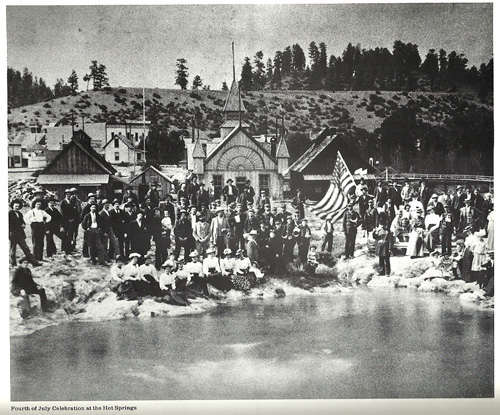 Pagosa Ladies, Try This One
Pagosa Ladies, Try This One
Early Caucasian settlers dug tubs or built above ground tubs from wood, filling them with buckets from the main vent. By the turn of the century, many families of the county had their own small bathhouses. Sunday afternoons after church, was a time of music, picnicking, bathing and socializing. There was a series of larger commercial bathhouses. The most famous was finished in 1881 and is featured in historic photos and the Visitor Center’s architecture. The hotels on mainstreet and Lewis Street had their own private indoor pools. One of these had a “women only” day. This became a great social event; the ladies brought lavish food and tried to outdo each other by ordering the latest and fanciest bathing suits from the east coast or decorating their own. Perhaps our modern ladies could use a day off, lounging at the spring, once a week!
The Spa Pool was built in 1938. When the Giordano family bought it in 1950 there were several old rental cabins on the property. They built the motel and more spring baths in the building behind the pool. This facility has a long history of use by Indians, some doing private ceremony until recent times.
Across the street was The Best Western also with bathing access. Their pools were developed over several years and about thirty years ago an octagon frame was constructed with four plastic hot tubs. Part of that octagon still exist under adobe at The Springs Resort.
Legends
Interest in using hot springs has come and gone many times. The Great Pagosa followed the same trend. Pagosa never became the “Carlsbad (Austria) of America” as was predicted by early whites, but a steady stream of people have kept at least one facility open. Over these years several legends of The Great Pagosa have been passed down. One was of a miner who washed his shirt in the spring and it dissolved in his hands. It was probably the first time he had taken it off in months and was obviously composting! An early story involves a Dr.Pierce and some friends who “salted” the mineral deposits near the spring. This means they fired a shot gun loaded with small gold nuggets, into the ground. Then they dug the gold up and tried to claim the springs as a gold find. Early doctors were keen to find a hot spring to prescribe for paying patients but his ruse didn’t work! Another story was that locals told newcomer fishermen that the spring was cooler down deep, that wonderful tasting fish lived there and that if one was caught and reeled up very slowly it would be cooked by the time it was netted. There were a great many stories of healings, including many Civil War solders coming in wagons via Fort Leavenworth, Kansas and soaking for weeks. Many healing reports included in firmed people coming to The Great Pagosa on stretchers in wagons and leaving walking or riding horseback.
The best known legend is of the curse the Utes put on the spring, baring white man from having success using the waters. When The Springs Resort developers bought the spring property the hot tubs were unsightly and the showers had black construction plastic lining the walls. They had a Ute Medicine Man and troupe from Ignacio come and exorcise (remove) the curse. There must have been something to it as they expanded every year from that moment culminating in the spacious and beautiful bathhouse and facility there now.

